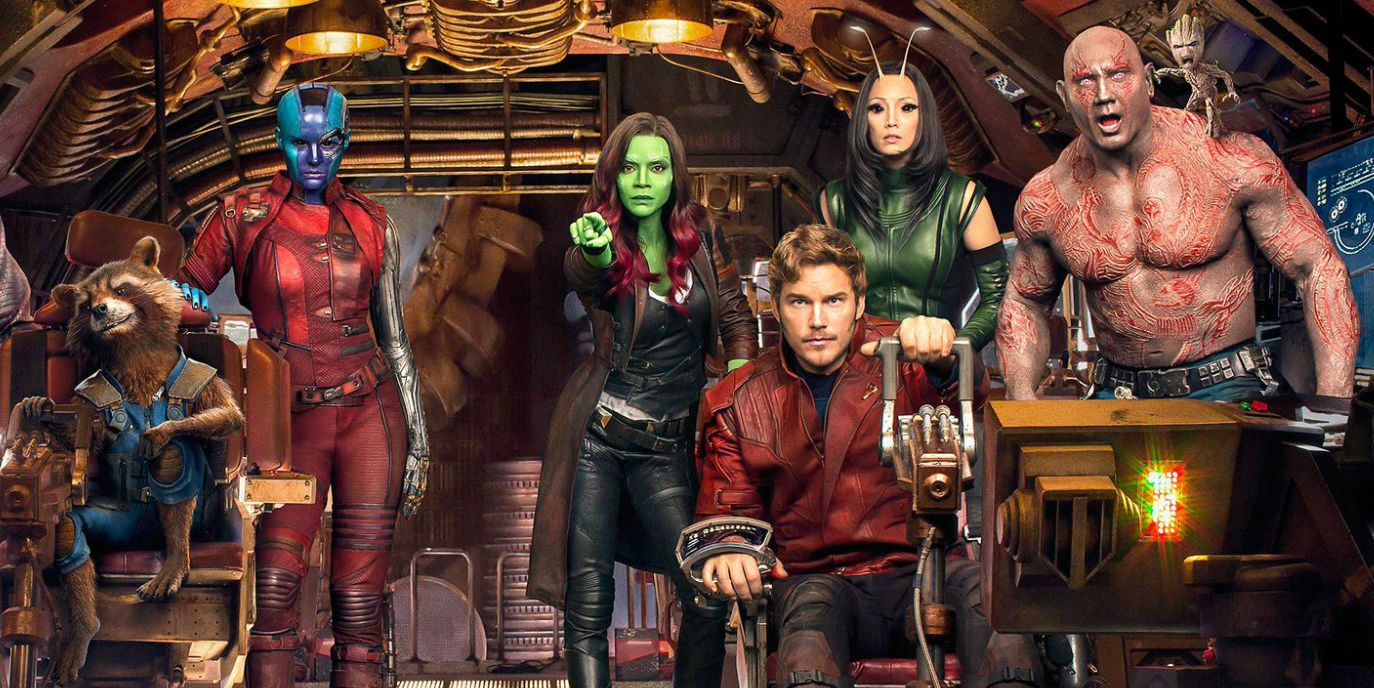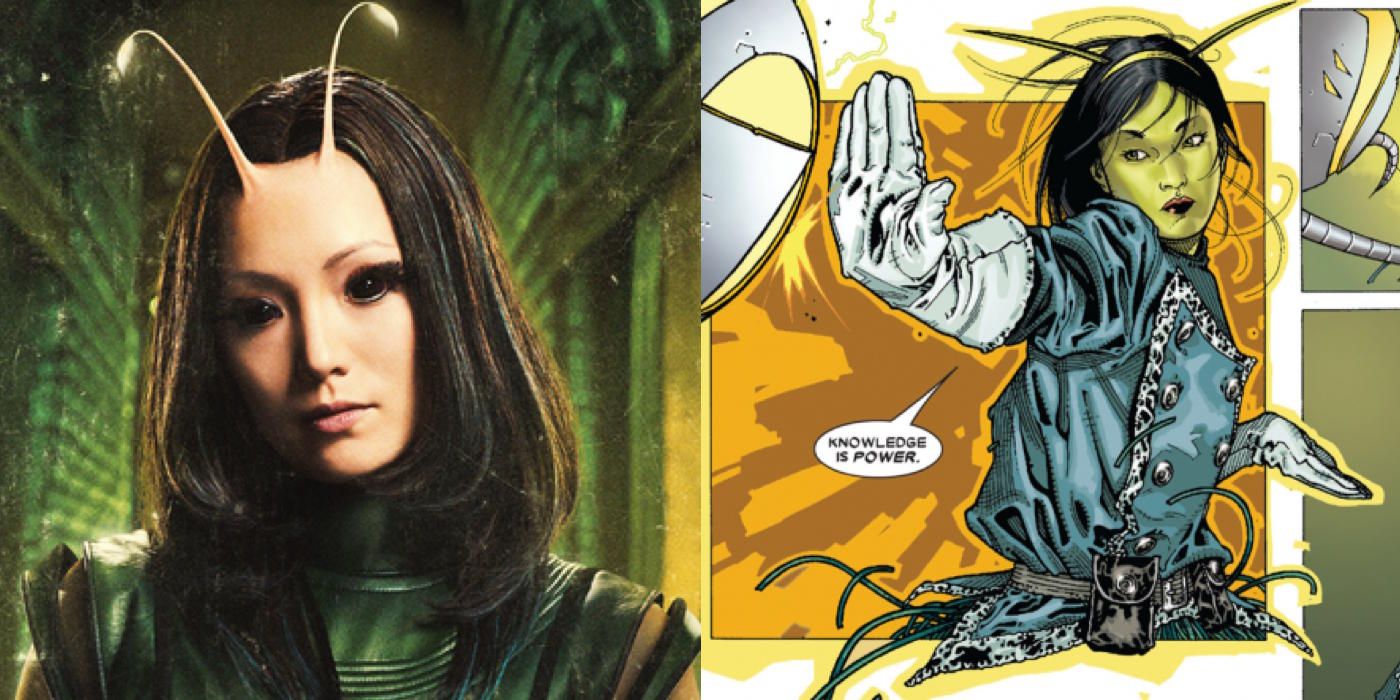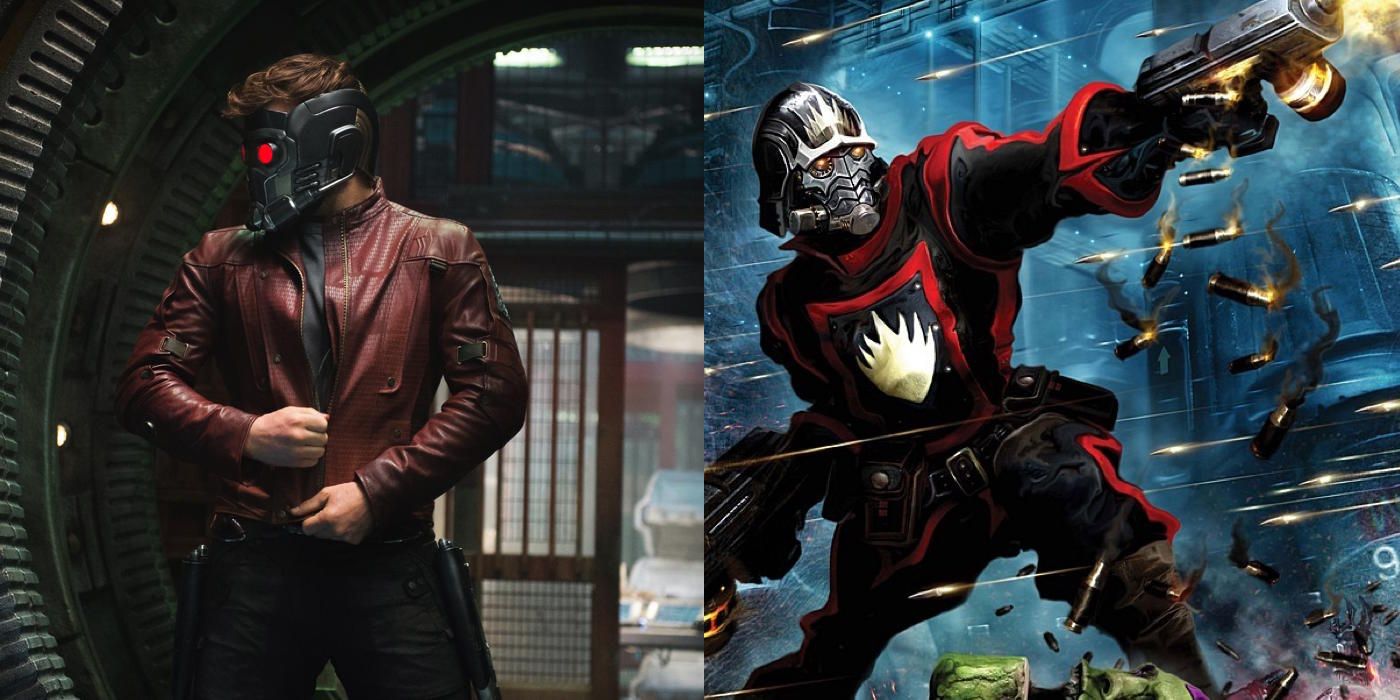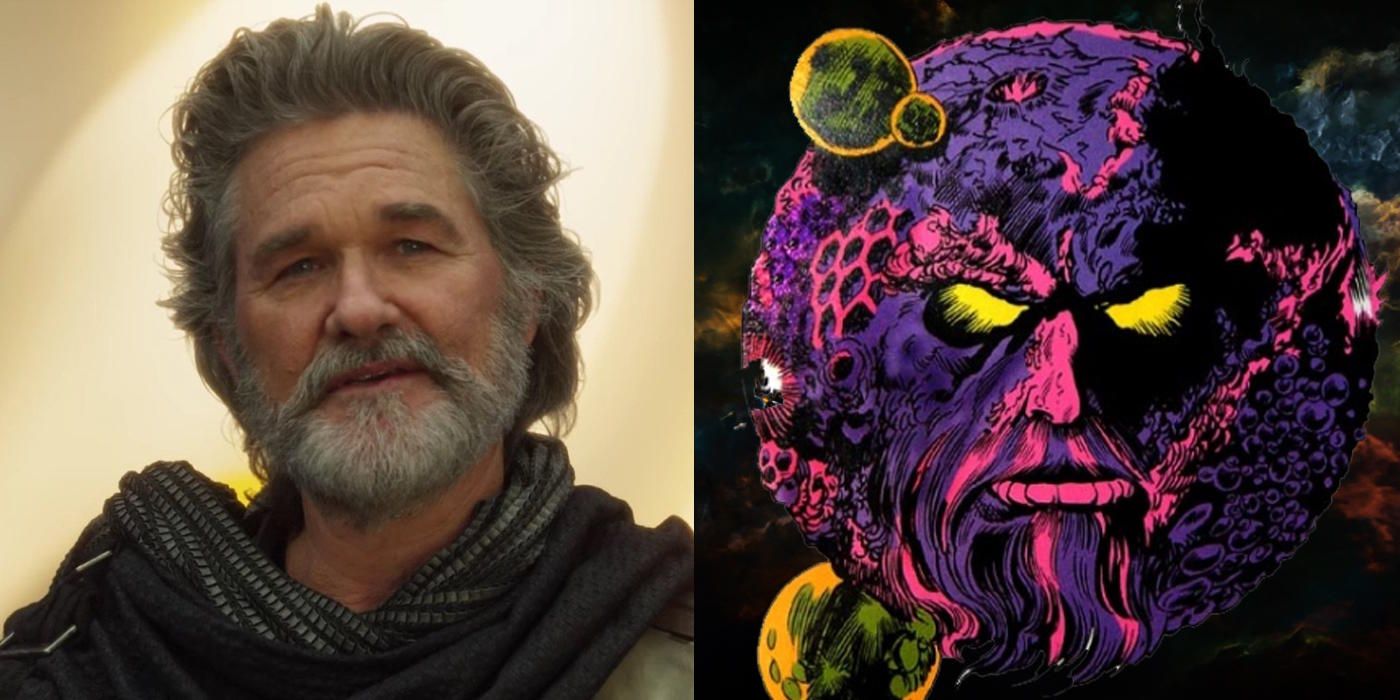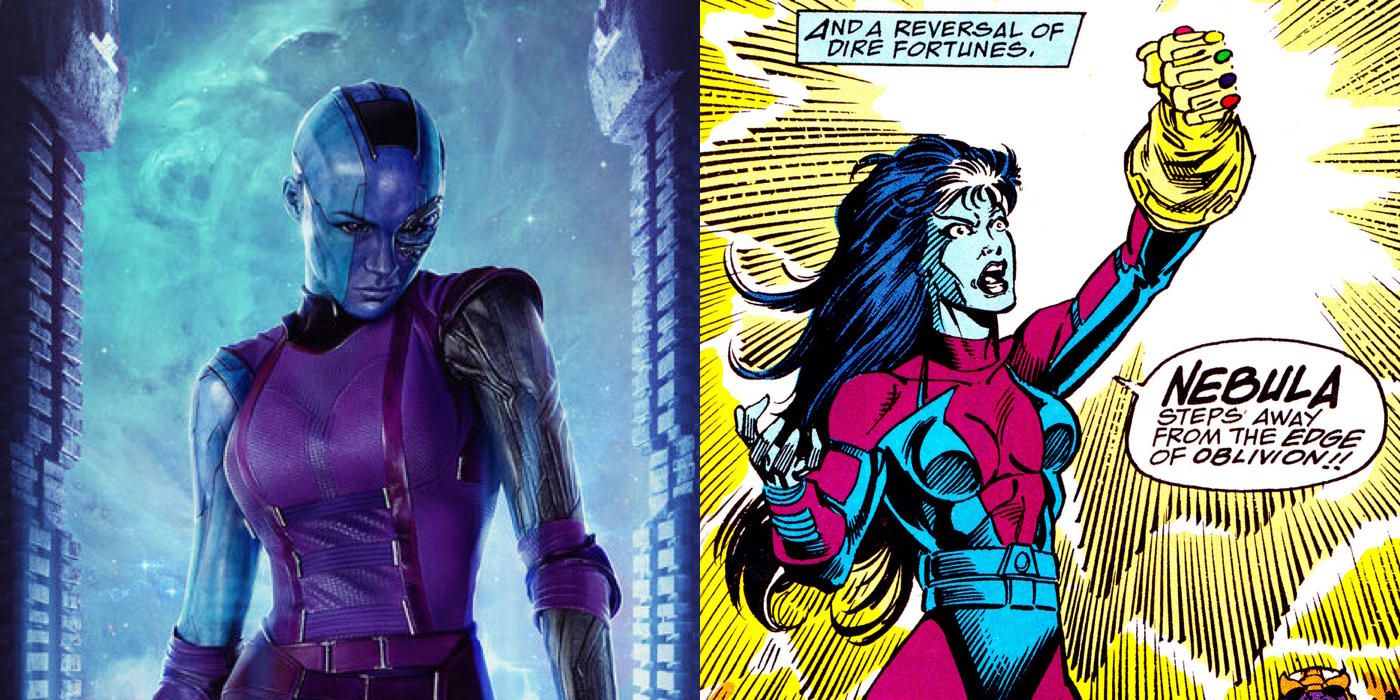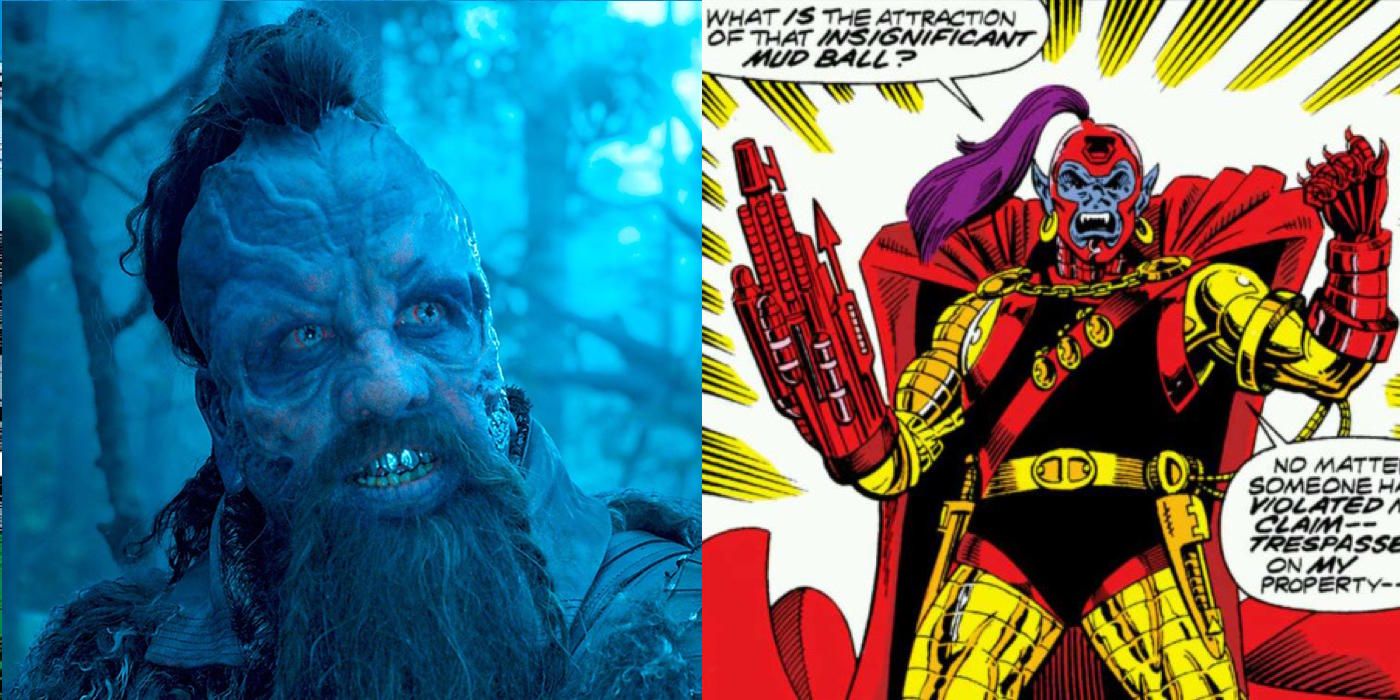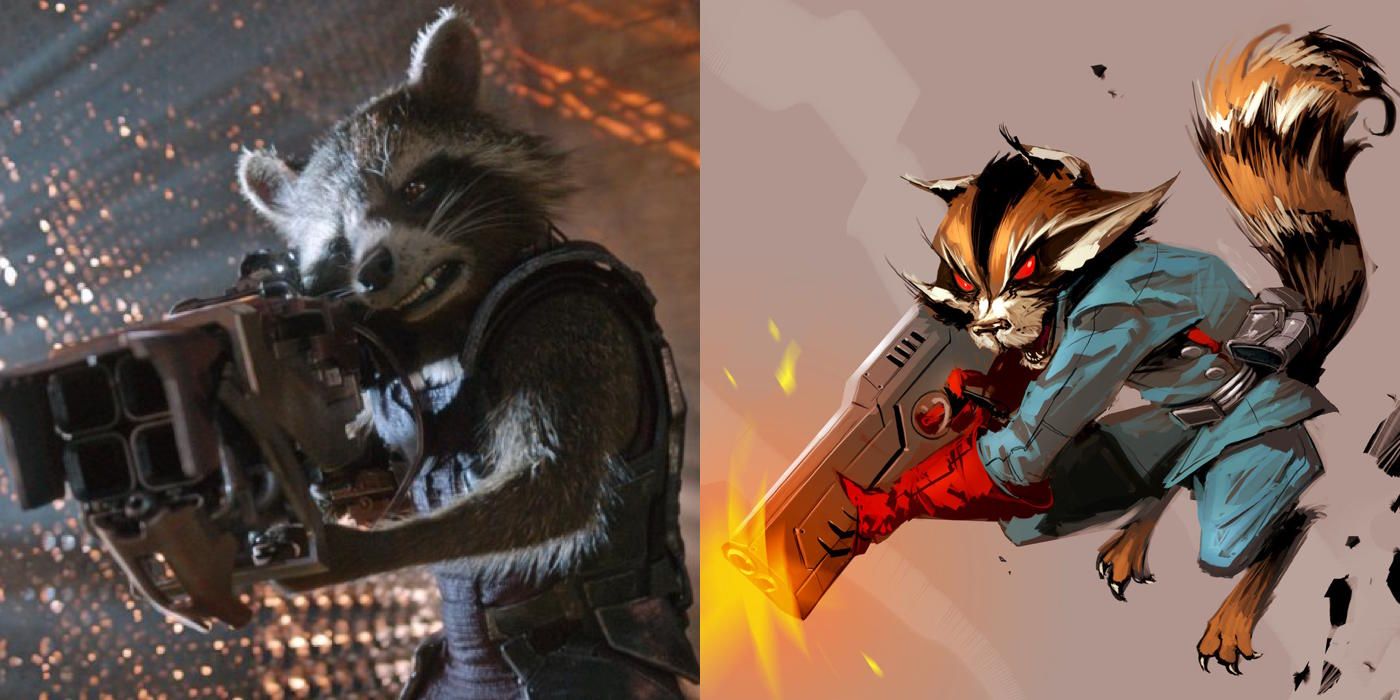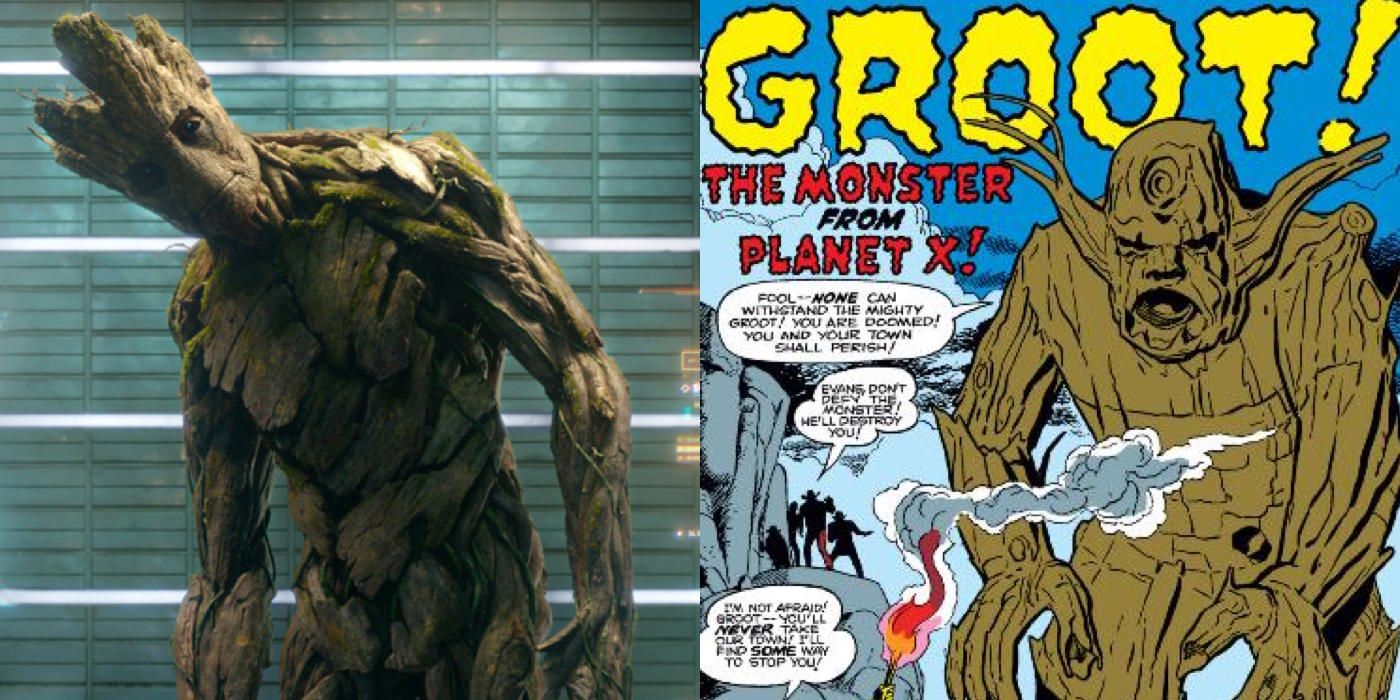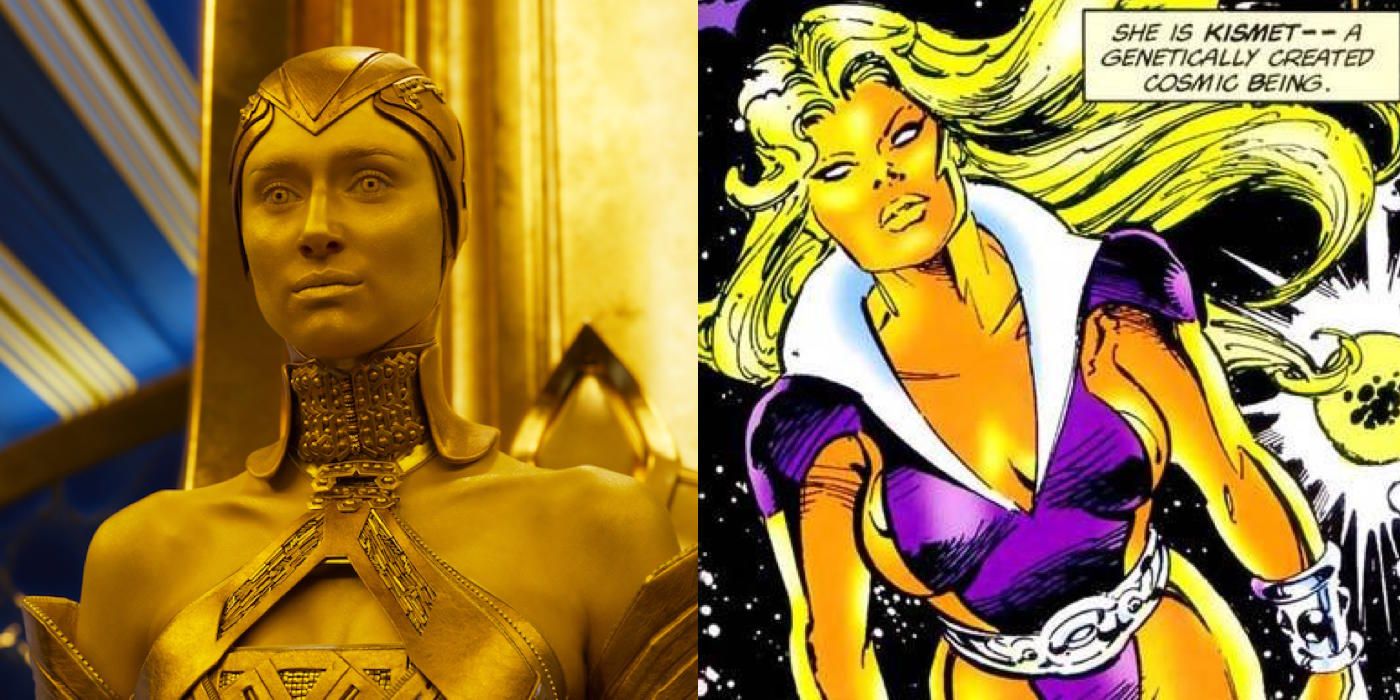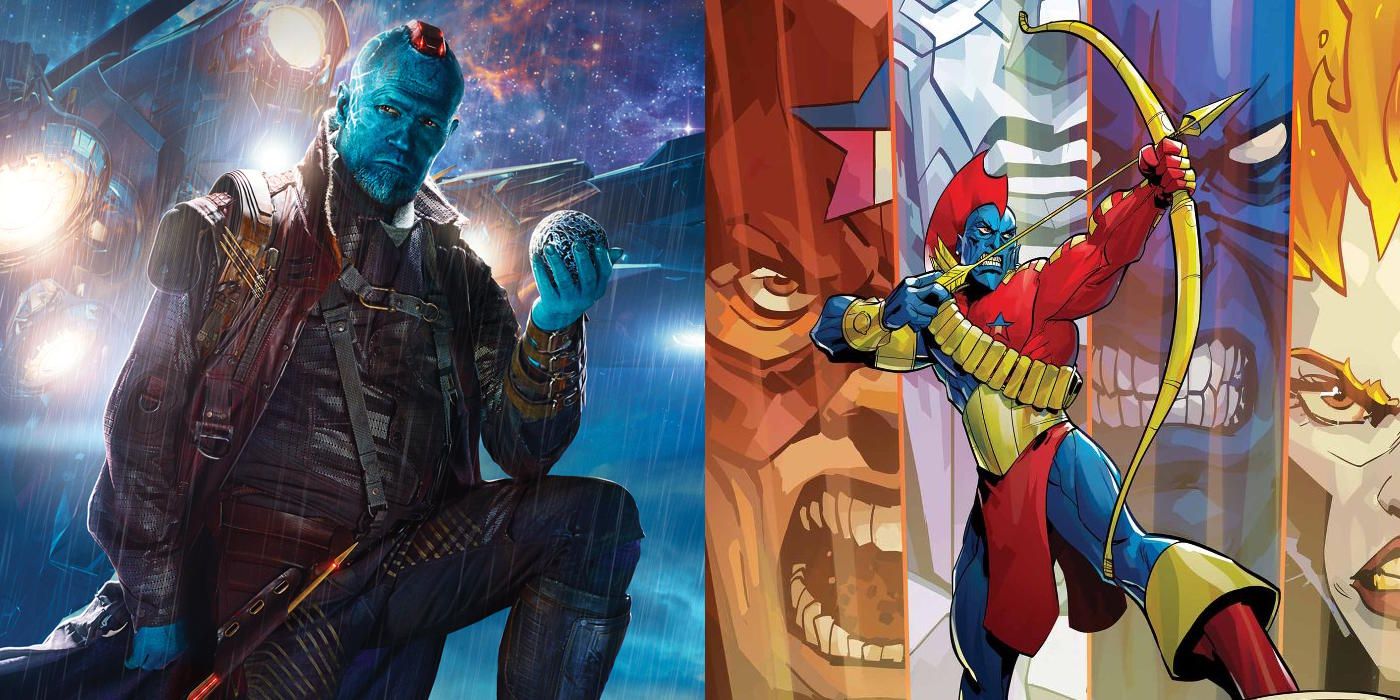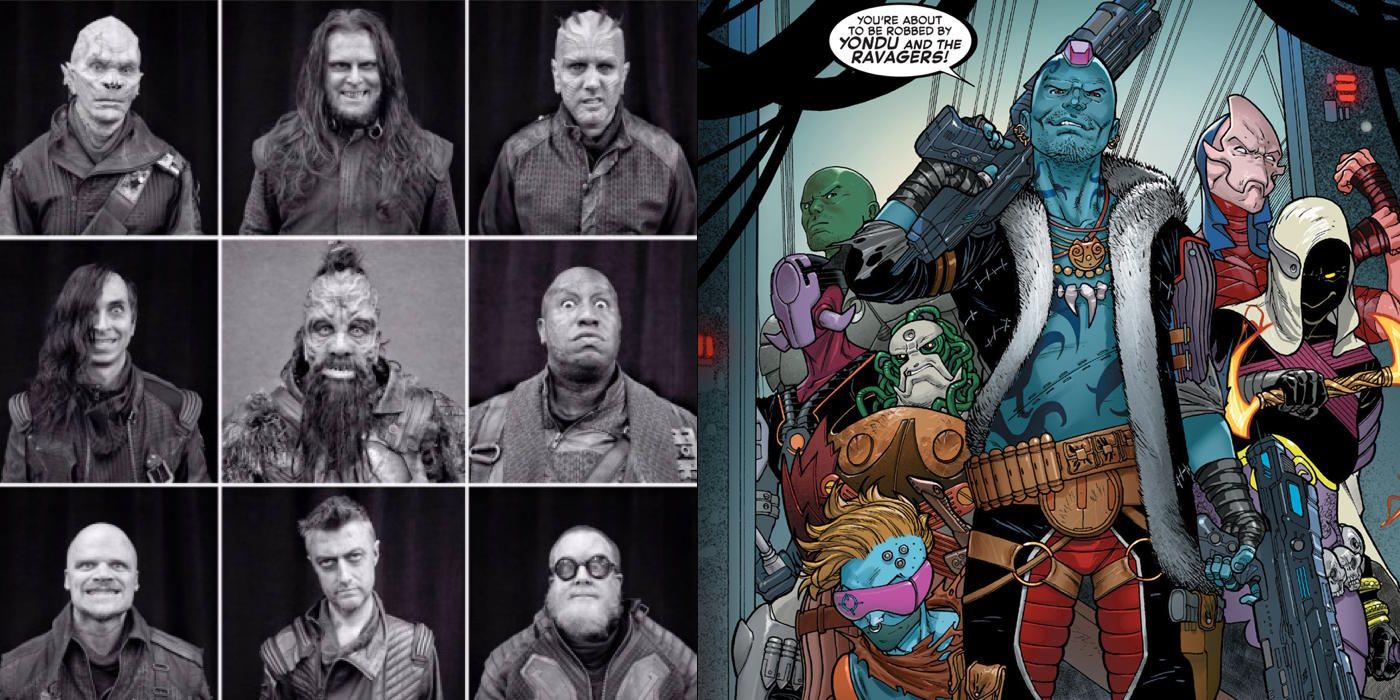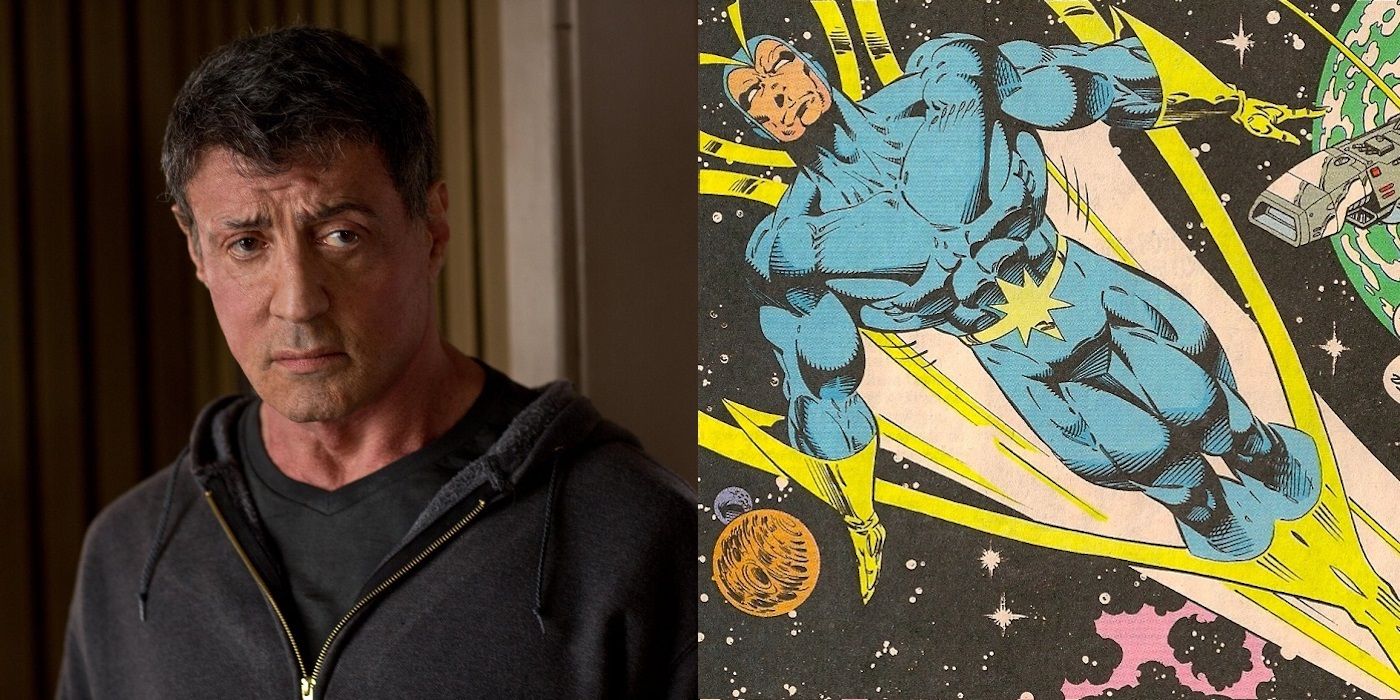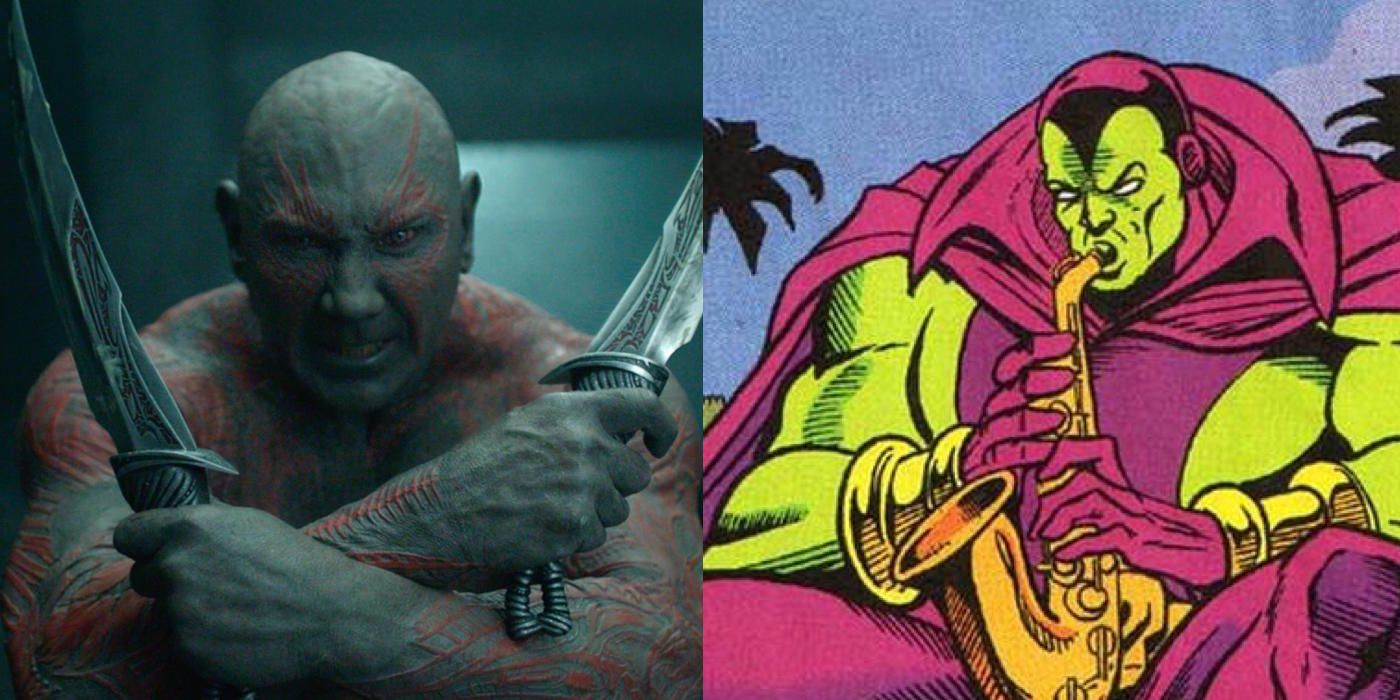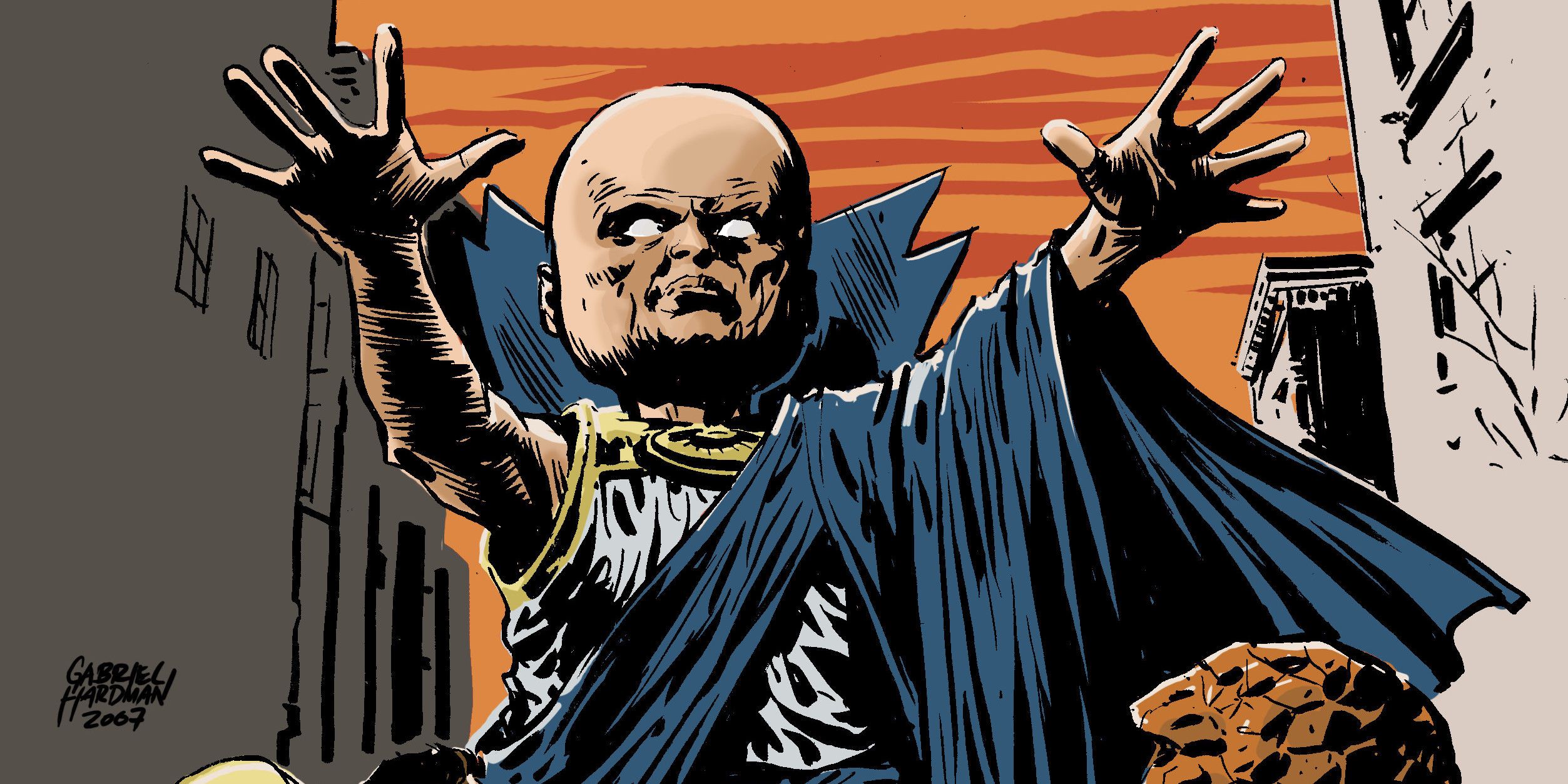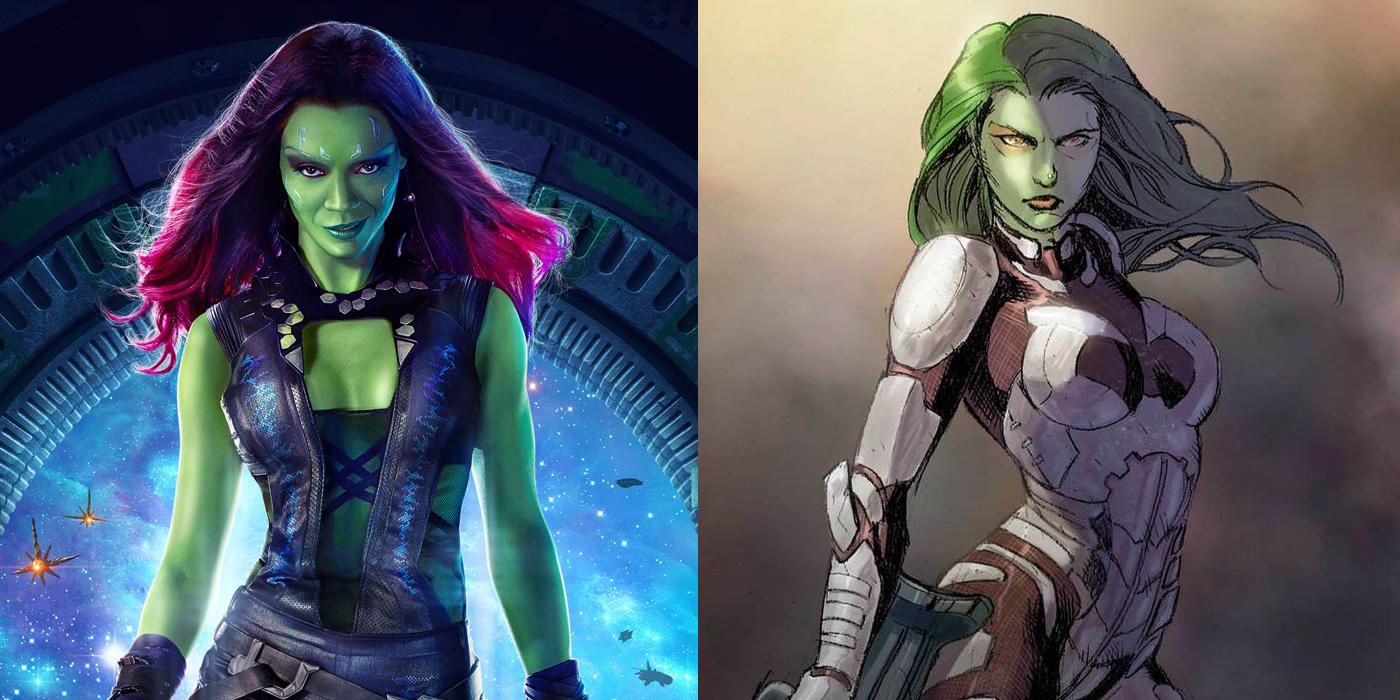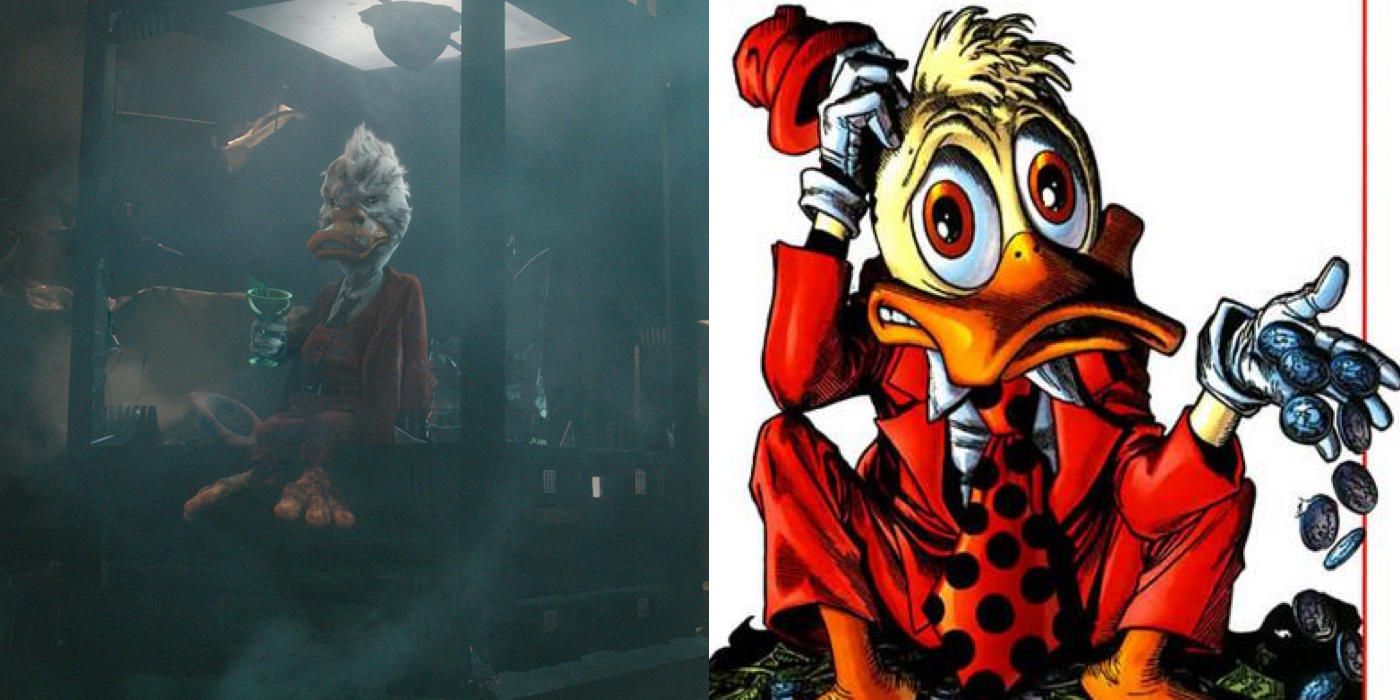Over the many decades of their existence in Marvel Comics, the Guardians of the Galaxy have gone through a number of changes and permutations. While the Avengers of the MCU are fairly close to the early comic origin of the team, the lineup of Guardians of the Galaxy Vol. 2 only dates back to the 2008 run of the book. Still, the team has had a rotating roster over the years, which writer/director James Gunn has paid tribute to across his two films to date. That said, most all of them have undergone a number of alterations, from physical traits to powers to backstory.
As with most films in the Marvel Cinematic Universe, the origins of the various characters have been tweaked and streamlined to fit together and tell a more cohesive story. As such, it can be interesting to go back to the source material and see exactly how much the heroes and villains of the films have changed on their way to the screen. Now that the Guardians franchise is two films strong, there are more than enough characters to compare to their comic counterparts.
With Guardians 2 now in theaters, here’s How 15 Characters Compare To The Comics.
15. Mantis
Like many of the characters on this list, Mantis has a long and complicated history that Gunn decided to condense for the film. She’s also originally from Earth, something she shares with a surprising number of the Guardians from the comics. Debuting in 1973’s The Avengers #112, Mantis wasn’t always a green-skinned empath with antenna. Born in Vietnam as the daughter of the villain Libra, Mantis was discovered by a sect of the Kree at a young age and deemed to be the potential Celestial Madonna. She was trained to be an expert in martial artists, strong enough to take on Captain America and Thor, but usually fought alongside the Avengers.
Following events too confusing to properly explain, Mantis became pregnant and was revealed to be the true mother of the Celestial Messiah. The pregnancy granted her new abilities and changed her appearance, though. Eventually, she’d end up taking part in the Annihilation event, the fallout of which generated the modern incarnation of the Guardians of the Galaxy.
Like in the MCU, Mantis has empathic powers, but is also a trained warrior and possesses a number of other psychic abilities. It's likely we’ll see some of these traits manifest in future films.
14. Star-Lord
The Star-Lord of the comics isn’t too far off from the movies. Obviously, his suit has changed a bit over time, but his Earth origin, time as a space pirate, and general disposition have all remained intact. Debuting in 1976’s Marvel Preview #4, it wasn’t until the events following Annihilation that Peter Quill became the leader of the Guardians.
Still, he’s played a role in a number of cosmic events over the decades, equipped with his signature helmet, flight suit, and his twin guns. In the comics, they’re elemental guns, whereas the movies treat them more like standard blasters.
Another big change is his parentage. While Meredith Quill from Earth remains his mother, his father in the comics is actually J’Son, the ruler of the Spartax people. Interestingly enough, however, creator Steve Englehart originally meant for Quill to grow from a selfish jerk into a cosmic powerhouse before his departure from Marvel. So while his origin from the films was never shown in the comics, his Ego-based powers actually line him up more with the vision Englehart had for the character.
13. Ego
As mentioned, Ego is not Quill’s father in the comics. In fact, Gunn changed a lot about his backstory to enable Kurt Russell to play the character. At the same time, the broad strokes of the source material are kept intact. Created by Stan Lee and Jack Kirby as a Thor villain in the ‘60s, Ego is, as his name states, a living planet. Mostly shown as a bearded face on an unusual planetary body, Ego actually possesses a lot of the powers shown in the movie.
While he doesn’t take a human form and mate with the cosmos, he can control every molecule of his surface; creating faces, appendages, and all manner of terrain. Like the Ego of the movies, he even possesses some internal organs. His origin in the comics is never detailed in great length, but he does state he was once a scientist who merged with a planet during a celestial event. He also has a variety of psychic and energy-based powers, making him a living Death Star of sorts. All told, Gunn stayed pretty faithful to the source material while adjusting things just enough to make the character work in the story.
12. Nebula
Debuting in The Avengers #257 in 1985, Nebula quickly rose from a mere space pirate and mercenary to one of the wielders of the Infinity Gauntlet. She went on to play a crucial role in the story surrounding Thanos’ quest for the Infinity Stones, something that may play out in Infinity War.
A skilled warrior, Nebula's theft of Thanos’ ship and a claim that he was her father led him to nearly destroy her. Afterward, he had much of her body rebuilt with cybernetic parts, finally claiming her as his own creation. The movies have tweaked things a bit, having Thanos "adopt" Nebula and augment her at a younger age.
Still, she remains a strong fighter and assassin, with only time telling whether she’ll one day hold the power of the Infinity Stones.
11. Taserface
In the comics, the hilariously named Taserface never served with the Ravagers or under Yondu. He has, however, long been a villain of the Guardians. Debuting in 1990’s Guardians of the Galaxy #1, Taserface’s origin is one corner of the comics that absolutely needs to come to the MCU.
Somehow, a collection of Tony Stark’s tech found its way onto a backwoods planet, with the beings living there adopting the gear and renaming themselves the Stark. Using the tech, Taserface fought the Guardians before his near death caused him to rebrand as the Nameless One and Overkill on different occasions.
While his origin isn’t fully explored in the movies, the Stark angle is unlikely. Still, that his dead body is never shown on screen could mean he’s still alive in some form, waiting to be resurrected as a diehard Guardians villain.
10. Rocket
Debuting a few issues after Star-Lord in Marvel Preview #7, Rocket Raccoon was created by Bill Mantlo in 1976. Whether the idea began with a talking space raccoon or Mantlo worked backwards from the Beatles’ pun is unclear. The reference was alluded to in the story “Now Somewhere In the Black Holes of Sirius Major There Lived a Young Boy Named Rocket Raccoon" from 1982’s The Incredible Hulk #271, but it was also the first time the name was used, as for the previous six years he'd simply been called Rocky.
Name disputes aside, the character remains strikingly similar to how he appears in the movies. A master strategist and weapons expert fond of his instruments, Rocket spent years as a warden on the planet Halfworld, which was filled with other anthropomorphic animals. Following Annihilation, he joined up Star-Lord and the other Guardians, though he still has plenty of solo missions and regularly gets into trouble.
His origin was tweaked a bit in the MCU, making him a creature of unknown origin who was experimented on for years. Still, Gunn’s movies have proven that nothing is off limits, so a visit to Halfworld could be in Rocket's future.
9. Groot
Groot has had one of the more complicated histories in Marvel Comics. Debuting back in 1960’s Tales to Astonish #60, the original Groot was a Stan Lee and Jack Kirby creation with a relatively normal vocabulary. Still, he was a giant, alien tree monster. He only popped up a handful of times in the comics over the decades, until his reboot in 2006. Even then, he still retained the ability to speak normally. Eventually, however, the Annihilation event concluded, he joined the Guardians, and his “I am Groot” speaking format became canon.
As for origins, there are a few of those as well. In most of them, he’s part of a species called Flora colossus and hails from the Planet X. Each of his many origins is different, but in all of them he’s a kindhearted individual usually isolated from his people because of his love for other lifeforms.
In the movies, we’ve yet to really get into Groot’s origin, so there’s no telling which version Gunn will use. Given his love of comics, however, expect some nods to Groot's various origins and his long Marvel history.
8. Ayesha
While Ayesha’s comic history is as multi-layered as Groot’s, it’s a bit more straightforward. She began life as Paragon, a follow-up to Adam Warlock in the Enclave’s efforts to create the perfect artificial lifeform. Debuting in 1977’s The Incredible Hulk Annual #6, she clashed with the Jade Giant before cocooning herself and reemerging a few years later as Her. From there, she took the name Kismet, before finally settling on Ayesha.
Like in Guardians 2, she’s portrayed as having golden hair and skin. In a bit of an inverse of her comics origin, she actually precedes Adam and is part of a massive society of created life known as the Sovereign. We’ll have to wait until the next Guardians to learn more about Adam and Ayesha, but expect both of their origins to be relatively different from the comics.
7. Yondu
Yondu Udonta first appeared in 1969’s Marvel Super-Heroes #18 as a hunter native to Centauri IV. He was quickly tasked by Major Vance Astro to lend his skills and bow to the cause of the first iteration of the Guardians of the Galaxy, where he’s served for most of his comic history.
In the first Guardians, the team was based on the 2008 incarnation of the team, thus negating Yondu’s involvement. Still, Gunn worked him into the story as a pirate and a father figure to Peter. His archery skills were paid tribute to in the form of his whistle-controlled arrow, and Guardians 2 even gave him a head fin closer to the one he has in the comics. Recently, an alternate version on Yondu even showed up on the comics, looking and acting much more like the MCU’s take on the character.
6. The Ravagers
While the Ravagers do exist in the comics, it’s only because of their inclusion in the MCU. With Yondu’s rework from a Guardians to a thief, Gunn invented the Ravagers as the group he leads and the crew that helped raise and train Peter. With Guardians 2, their role has been expanded even more, showing them to be a vast faction of thieves united across the galaxy by a code. The only connection they have to the comics is their flame logo, which was lifted from Star-Lord's old uniform from the page.
In the comics, the Ravagers made their debut in last year’s Star-Lord #2 as part of the new Yondu’s crew. Comics have a long history of tweaking characters and plots to reflect TV and movies, and the MCU has reshaped Marvel Comics in a number of ways. The Ravagers may be new to the page, but they’re likely to have a long history ahead of them.
5. Starhawk and the Original Ravagers
In the movies, Stakar Ogord is introduced as a leader of a Ravagers faction Yondu once ran with. In one of the five tags, it’s revealed he used to be partners with Charlie-27, Aleta, Mainframe, and Krugarr, along with his current partner, Martinex. All told, the scene pays tribute not to the original Ravagers, but the original Guardians.
When Yondu was introduced back in 1969, it helped kick off the idea of the Guardians in Marvel Comics. Led by Vance Astro, the team consisted of the archer, Martinex, and Charlie-27. Stakar and Aleta soon joined, with Mainframe and Krugarr coming aboard in the ‘90s.
Just like Yondu’s change, it’s more of a tribute to comics as Stakar’s faction is shown to be thieves rather than heroes. Still, expect them to continue to show up in the MCU and help assist the all-new Guardians in future films.
4. Drax
Like Mantis, Drax was once a resident of Earth who slowly underwent some radical changes to become a celestial warrior. Premiering in 1973’s Iron Man #75, Drax the Destroyer was once Arthur Douglas. Following an attack by Thanos, Arthur is killed and his daughter Heather is taken by Thanos’ father Mentor and trained to become Moondragon. Meanwhile, Arthur’s soul is placed inside a new body in an effort to create a warrior that can kill Thanos.
For years, Drax chased the Mad Titan across the cosmos, in a costume resembling the Vision with the Hulk’s color scheme. Eventually, he got an updated look leading into the Annihilation event, making him appear more like the version in the MCU. Gunn, of course, removed the Earth origin and the connection to Thanos’ father, but the core traits remain.
There’s even the possibility that an updated version of Moondragon could show up in a future film, something Dave Bautista is hoping to see.
3. The Watchers
Back in 1963’s Fantastic Four #13, Stan Lee and Jack Kirby introduced the Watchers and Uatu, the most famous member from the comics. Rumor has it that Lee’s peers thought the idea too silly, which is saying something given the nature of comics in the ‘60s. Still, Uatu and his charge of observing Earth has long played into the comics. Though the beings are tasked with watching but not interacting, Uatu especially has broken this rule many times.
Given their origin, many assumed Fox owned the rights to the Watchers, but it’s possible a deal was worked out like the one that allowed Ego to appear. In the film, they appear almost identical to the comics, and even get to interact with Stan Lee, thus bringing his creations full circle and vindicating him. With their introduction into the MCU, it’s a safe bet that we’ll see them pop up here and there in the background of other cosmic films, as a sort of living Easter egg.
2. Gamora
Unlike Nebula, the Gamora of the comics was actually raised by Thanos to be a weapon for him. Premiering in 1975’s Strange Tales #180, Gamora was designed by Thanos creator Jim Starlin. Intended to destroy Magus, the evil version of Adam Warlock, Gamora factored into a number of cosmic stories over the years. Eventually, she joined up with the heroes and became a Guardian following Annihilation.
In the movies, the Warlock connection is removed, but her key backstory is kept intact. Her look is tweaked a bit to make her appear more human, and she sadly loses much of her fervor for battle as Gunn seems more keen to make her the sensible member of the team and a love interest for Peter. Hopefully, however, her confrontation with Thanos in Infinity War will be more fitting of the title The Deadliest Woman in the Galaxy.
1. Howard the Duck
Following the widely-panned Howard the Duck film on the ‘80s— Marvel’s first, incidentally— it was safe to assume the titular character would never again appear on screen. Luckily, Marvel has a sense of humor, James Gunn is given license to do whatever he wants, and Howard has seen a resurgence in the comics.
Premiering in Adventure into Fear #19 in 1973, Howard is from a faraway planet before being deposited on Earth. From there, he wends his way through a number of misadventures, many of which take place in space. Recent years have remade Howard as more of an everyman detective, but the version glimpsed twice now in the MCU is closer to his original incarnation. Looking fairly haggard and never far from a drink, Seth Green has voiced the character in his two cameos.
While we’ll likely never see Howard headline a film, he’s still one of the best Easter eggs in the MCU.
---
Which changes from the comics did you like most in Guardians of the Galaxy Vol. 2? Which ones didn't work for you? Let us know in the comments.

